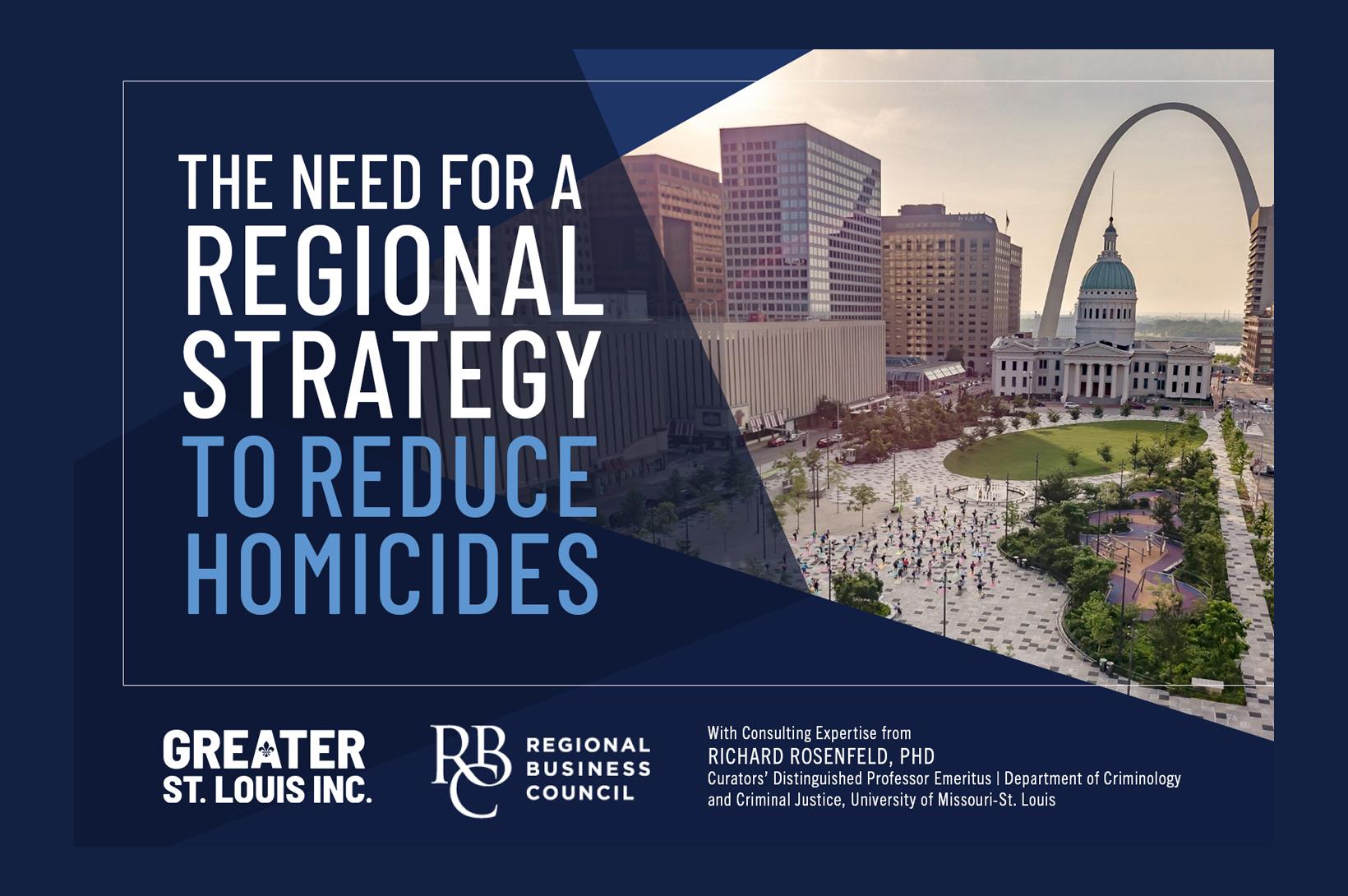
Read the news:
-
Set homicide reduction targets, business groups urge St. Louis' elected leaders (St. Louis Business Journal)
-
‘An outlier’: Business leaders call for regional plan to cut St. Louis’ murder rate (St. Louis Post-Dispatch)
“This is solvable,” say Hall, Osborn
Greater St. Louis, Inc. and the Regional Business Council released today a white paper that details the homicide crisis in the 15-county bi-state St. Louis metro and called on regional officials to come together to develop a regional strategy to address it.
The report, “The Need for a Regional Strategy to Reduce Homicides,” was developed in partnership with Dr. Richard Rosenfeld of the University of Missouri-St. Louis, a nationally renowned expert on criminology and criminal justice.
Among the report’s key findings:
- The 15-county bi-state St. Louis metro has a homicide crisis. The St. Louis metro has one of the highest metropolitan homicide rates in the country. Despite progress on reducing overall crime rates, and recent decreases in homicides, the homicide rate in the 15-county St. Louis metropolitan statistical area was more than double the U.S. metro average in 2020.
- Stopping homicide must be the metro’s top priority. Violent crime is a leading barrier to growth in the St. Louis metro, leaving behind not only a human toll, but also an economic one that prevents St. Louis from reaching our true potential. Furthermore, homicides are often linked to other types of violent crime. Nationally recognized criminologist Thomas Abt writes that homicide is “a useful indicator of trends in violent crime generally, as other offenses tend to rise and fall in unison with homicide over the medium and long term.”
- The crisis is solvable. Leaders from all 15 counties in the metro need to collaborate on a regional strategy to reduce homicide that includes clear goals and strategies that operate at scale.
- We need to follow the guidance of experts. The region must set a clear, quantifiable goal to reduce homicide. A regional strategy must employ rigorous, evidence-based strategies that balance enforcement with prevention.
In releasing the white paper, the leaders of Greater St. Louis, Inc. and the Regional Business Council, Jason Hall and Kathy Osborn, respectively, issued the following joint statement:
“Violent crime impacts everyone in the 15-county bi-state St. Louis metro and, right now, we are in the midst of a homicide crisis. This is taking a tremendous human toll and is a barrier to economic growth and prosperity for people in every community. This is our crisis as a region, and it requires all of us to roll up our sleeves and get to work to fix it.
“This is solvable. We can reduce violent crime and help our region reach its true potential if we work as one metro to develop a strategy that is collaborative, employs evidence-based strategies, and sets clear goals we must achieve.”
To advance the development of a regional homicide reduction strategy, the East-West Gateway Council of Governments will host a Regional Crime Summit that will take place in the coming weeks. The summit will convene elected leaders, police, prosecutors, educators, the business community, human service providers, religious organizations, and outside experts to begin forming a unified strategy to reduce violent crime.
